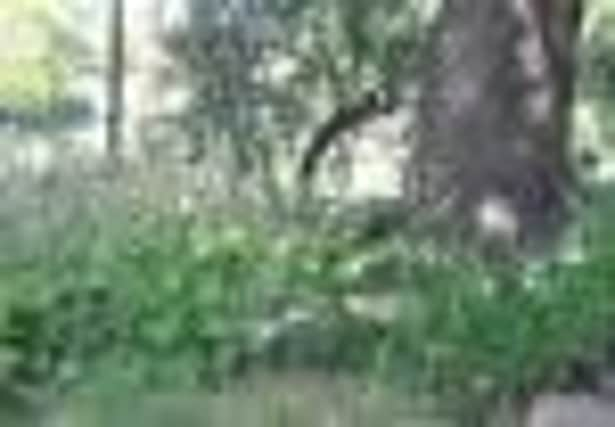Easy plants for difficult places


Planting under trees can be difficult, as shade and competition for plant foods and moisture will limit the range of plants that will thrive here. Except for the driest and most shady conditions, found under evergreens with low canopies such as yews and hollies, where few plants will thrive (including weeds), there are plants that can be relied upon to provide colour and interest over much of the year – bulbs in the spring, herbaceous perennials across the summer and evergreens, such as ferns, in the winter.
If you take a walk through a woodland in spring you may come across native bulbs such as wood anemones and bluebells. These grow, flower and then die down before the leaf canopy above thickens and light is excluded. We have planted spring flowerers, such as lily of the valley, Solomon’s seal, daffodils and narcissi on our woodland edge, where shade is less dense. There will be early colour from narcissus ‘Tete-a-tete’; ‘Golden Harvest’ and ‘King Alfred’ will then take over, and the pheasant’s eye narcissus finishes the display in late April or May.
Advertisement
Hide AdAdvertisement
Hide AdI have already sung the praises of hardy geraniums in these pages; two which are good in shade are Geranium macrorrhizum and its many varieties, which produce white, pink or mauve flowers in May and June, and Geranium nodosum, which bears lilac-purple flowers in July. All grow to between 30-40cm/12-16ins tall, don’t need staking and are pest and disease resistant.
The woodland spurge, Euphorbia amygdaloides, and its forms are also good doers, although it does sometimes succumb to mildew. More reliable is the variety robbiae (sometimes referred to as Mrs. Robb’s bonnet, as it was collected in Turkey and taken home in a hat box belonging to a diplomat’s wife). It has dark glossy green foliage and bears yellow flowers in June and July. If rabbits are a problem where you garden, the spurges are worth trying, as they are relatively resistant to rabbit damage.
Directly underneath our wellingtonia we have planted the yellow archangel, Lamiastrum galeobdolon. This produces arching shoots about 45cm/18ins long which have light green leaves with silver markings. It makes excellent ground cover and can be inter-planted with bulbs. We will also plant the autumn flowering Cyclamen hederifolium here. This is renowned for tolerating dry shade and has white, pink or mauve flowers in September and October which are set off with attractively marbled green and silver foliage.
Evergreen ferns make first class woodland ground cover. The fronds of our native hard shield fern, Polystichum aculeatum and soft shield fern, Polystichum setiferum, remain fresh and attractive throughout the winter. The latter has many forms with decorative congested and divided fronds.
Advertisement
Hide AdAdvertisement
Hide AdFinal choice is the Christmas box. Sarcococca humilis is a marvellous, low growing shrub (height 60cm/24ins) with glossy evergreen leaves and produces small, creamy white, highly scented flowers in February and March. It too is trouble-free and pest and disease resistant.